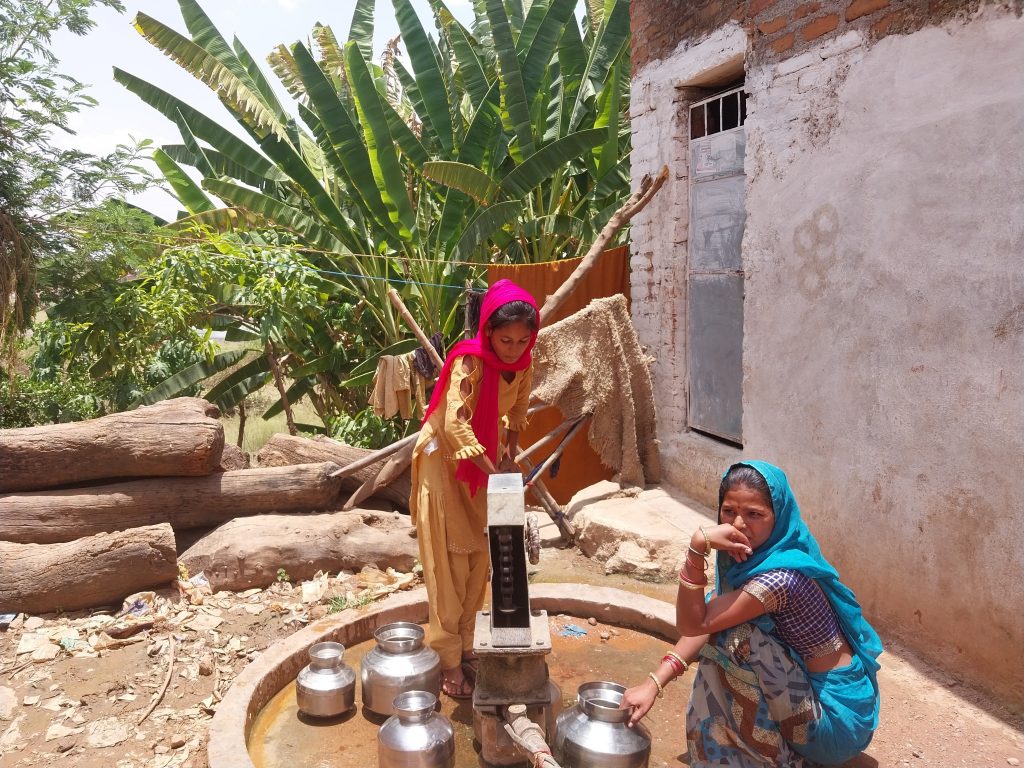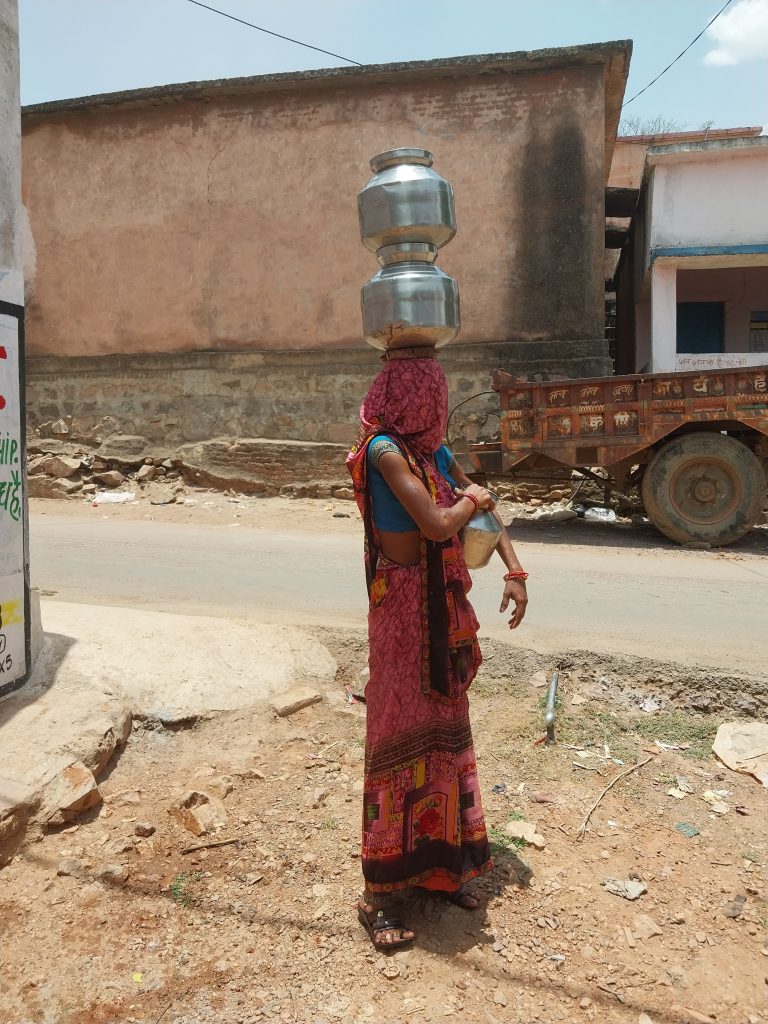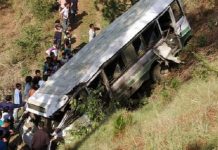
Pani panchayats led by women have been formed in several villages of Bundelkhand to tackle water wastage and address conservation issues, writes Deepanwita Gita Niyogi
In Narayanpur village of Baldeogarh tehsil, about 32 km from Tikamgarh district of Madhya Pradesh, the house of Ladkunwar Ahirwar had a few women visitors on a summer morning. They highlighted the importance of the pani panchayat formed in February last year at the village level. It has 15 members of which seven are women.
In the dry Bundelkhand region spanning two Indian states, Uttar Pradesh and Madhya Pradesh, pani panchayats are addressing the grave issue of water misuse. These usually comprise 10-15 members who meet once every month to discuss how to conserve this precious resource.
“It is important to reduce water misuse. So, the members of the pani panchayat talk on how to save every drop of water during meetings. To prevent wastage and ensure groundwater recharge we have demanded soak pits so that water can seep into the ground gradually. People do not understand the importance of water,” said resident Geeta Verma.

As rural women bear the burden of fetching water from long distances, pani panchayats are led by women who make up about 70 percent of the membership. In the harsh summer months when Bundelkhand’s villages face difficulty in accessing water, it is imperative to think about how to support livestock and agriculture besides drinking water needs. In many houses, goats are thus preferred over buffaloes as the latter needs 150 litres of water daily.
Desiring for change
The formation of the pani panchayat was possible in Narayanpur as many women empowered themselves first through self-help groups. Naturally, they can now place their demands related to water usage with confidence. There has been a marked change after pani panchayats were formed in several villages of Bundelkhand. The members submit action plans for common water harvesting structures. In Narayanpur, the members have placed a proposal for a water storage tank.
Verma and her companions desire for a real change at the ground level through the pani panchayat. “In the village, members of the pani panchayat urge others to only use as much water as needed. Water wastage is being tackled by directing waste water towards a vegetable garden. This is also ensuring nutrition,” said Ramvati Devi while pouring out tea.

Even for the milk tea to be tasty for visitors, the water quality has to be right. But in Narayanpur village, there is only one hand pump which yields good quality water which is used for making tea and for cooking tasty dal. As all women depend on it for water, it takes an hour and sometimes even more than that to fetch water, Verma added. The rest of the hand pumps yield salty water.
“There is too much rush in the mornings as we have to cook and send the children to school. So, we often fetch water in the afternoon when the sun is at its peak. Even water for bathing has to be fetched from outside,” said resident Seema Ahirwar.
Since its formation, the pani panchayat of Narayanpur has functioned like a self-help group. It has discussed the importance of water conservation for a sustainable future. The meetings are held from 10 am to 3 pm at the Panchayat Bhavan.
When water spills over or gets accumulated in any place in the village, mosquitoes breed. That is why the pani panchayat members of Narayanpur even urge children not to waste water.
Speeding up work in villages
In many villages, pani panchayats are ensuring that work on water harvesting structures like farm ponds, which help farmers irrigate lands, gather speed by asking questions to gram panchayats. Wheat is the dominant winter crop in Bundelkhand and in the Kharif season, mainly urad is grown.
“When the pani panchayat members meet, they take decisions related to water and how to mend matters. The link happens through pani panchayats to gram panchayats and all informal talks turn into formal matters,” said Harendra Kumar, programme officer and team lead in Tikamgarh for Manjari Foundation, a non-profit working on livelihood and asset creation in several villages of Bundelkhand.
Avadh Kishore Bharti, who works for the foundation at the ground level, said the selection process of the villages happened through the formation of self-help groups. The organisation’s water conservation measures are aimed at helping marginal farmers and pani panchayats are playing a crucial role in this. Narayanpur village has water deficit.

In another village called Rorai, the pani panchayat was formed about a month ago and there are 10 members in it. Resident Dharmendra Singh Thakur said there are six women and four men in it. “We formed the pani panchayat to ensure that there is groundwater recharge.” However, even if pani panchayats are doing commendable work, village heads do not sometimes favour them.
In Papawani village, there are eight men and 10 women members in the pani panchayat. They have met about 12 times over the course of a year. The village has a few hand pumps, but still its residents face drinking water crisis. The pani panchayat was formed for conserving water in the village, which has a high migration rate and received inadequate rainfall last year. Pani panchayats are also preparing water budget reports.












